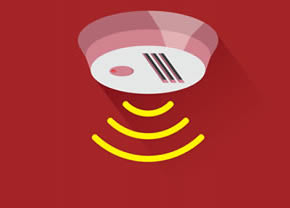Lithium-ion batteries: shop, charge, and recycle safely
In NSW, portable lithium-ion batteries have become a leading fire hazard, posing serious risks in homes, workplaces, and waste facilities.
By taking simple steps at each stage of a battery's life cycle-shopping, using, charging, and recycling — you can protect yourself, your loved ones, your workers and your community.

Shop
- Buy safely: Choose batteries and chargers from reliable manufacturers. Look for the Australian Regulatory Compliance Mark (tick) directly on the product. Ensure the charger purchased is suitable for the device or micromobility vehicle (e-scooter, e-bike).
- Verify approval: Avoid items without visible approval marks. Ask the seller for proof or report unapproved goods to NSW Fair Trading.
- Know declared articles: When purchasing a charger, consider whether it is a 'declared article'. This means it has been approved by the Commissioner for Fair Trading or a recognised external approval scheme and carries the appropriate approval mark and complies with the relevant Australian Standard. See the full list of electrical goods that can be assessed and declared articles.
- Report unsafe products: Unapproved electrical goods are illegal and dangerous. Check the product safety recall list on the ACCC Product Safety Australia website.
If you become aware of an unsafe situation or item, whether or not anyone has been injured:- Alert the supplier about the issue.
- Report the matter to NSW Fair Trading by calling 13 32 20 or making a complaint online.
- You can also report the unsafe product to Product Safety Australia.
- Penalties: Selling non-compliant items can result in fines up to $825,000 or imprisonment.
Stay safe—shop smart. Visit NSW Fair Trading for more tips.

Charge
- Be prepared: Install smoke or heat alarms in rooms where batteries are charged. Charge large batteries (e.g. for e-scooters or power tools) in garages, sheds, or carports, away from living areas and exits.
- Use the right charger: If the charger didn't come with the device or battery don't use it. Just because the plug fits, it doesn't mean it's compatible. Only use approved chargers to charge your battery. Look for the Australian Regulatory Compliance Mark (tick) to ensure safety and compatibility.
- Charge responsibly: Avoid charging batteries while sleeping or away from home. Disconnect devices once fully charged to prevent overheating. Never use and charge devices at the same time in bed. Never charge in exits or anywhere that would prevent you from escaping in the event of a fire.
- Choose safe surfaces: Always charge devices on hard, non-flammable surfaces like concrete or tiles. Never charge on beds, sofas, or carpets.
- Inspect for damage: Don't use and charge batteries that are swelling or bulging, leaking, or overheating. Don't use and charge the device if it is cracked, dented, punctured, or crushed.

Recycle
- Don't bin batteries: Lithium-ion batteries should never go into home waste or recycling bins. They can cause fires during waste collection, transportation, handling and processing.
- Recycle safely: Take small, undamaged batteries to a battery recycling drop-off point. Tape over battery terminals with clear adhesive tape before carefully placing them in the collection bin.
- Find drop-off locations: For safe disposal, visit the NSW EPA website here.

Warning signs: damaged batteries
Batteries that show any signs of damage should be disposed of carefully as they carry the risk of becoming involved in a fire.
Damaged batteries and battery-powered devices include:
- Batteries that show signs of swelling or bulging, leaking, cracks, dents, punctures, or crushing
- Overheated batteries that may have vapours or smoke
- Batteries that have gotten wet or have been in water
- Batteries that have been in or exposed to fire.
Next step
- Never use or charge a damaged battery.
- Never throw them in your regular home waste or recycling bins.
- Never take damaged batteries to battery recycling collection points or sites.
- Damaged batteries should be kept outside in a well-ventilated area. Store at least 3 metres from any structures and/or combustible materials.
- Small batteries or devices can be placed in a plastic container of water to cool and prevent further ignitions.
- Place leaking or damaged (but not overheated or off-gassing) batteries in a clear plastic bag or container and take them to a Community Recycling Centre or a Household Chemical CleanOut event for disposal.
Learn more here on what to do if you're device or battery is smoking or on fire.

Other risks: battery alterations
Always use a qualified professional: Battery repairs, servicing and installations should always be carried out by qualified professionals. A significant proportion of incidents involving lithium-ion batteries are from equipment that has been built or engineered by inexperienced or unqualified people.
Don't take unnecessary risks: Working on lithium-ion batteries can be highly dangerous. Serious injuries and fatalities have occurred when batteries have been mishandled.
Don't DIY: Cheap, unprotected, and second-hand batteries used in DIY projects have led to severe fires causing significant loss.

Downloads and more information
Campaigns
Further information and related pages
- Detailed information about Lithium-ion batteries and information regarding our research program can be found here.
- An e-bike and e-scooter battery safety info page is available here.
Printable downloads
Printable battery and charging safety factsheets are available for downloading.
- General battery and charging safety factsheet (PDF)
- E-bike and e-scooter charging safety poster (PDF)
Campaign resources and downloads
A campaign toolkit has been developed to help you communicate with your local community about how to safely use and dispose of lithium-ion batteries. It contains assets and resources for you to download and share.



